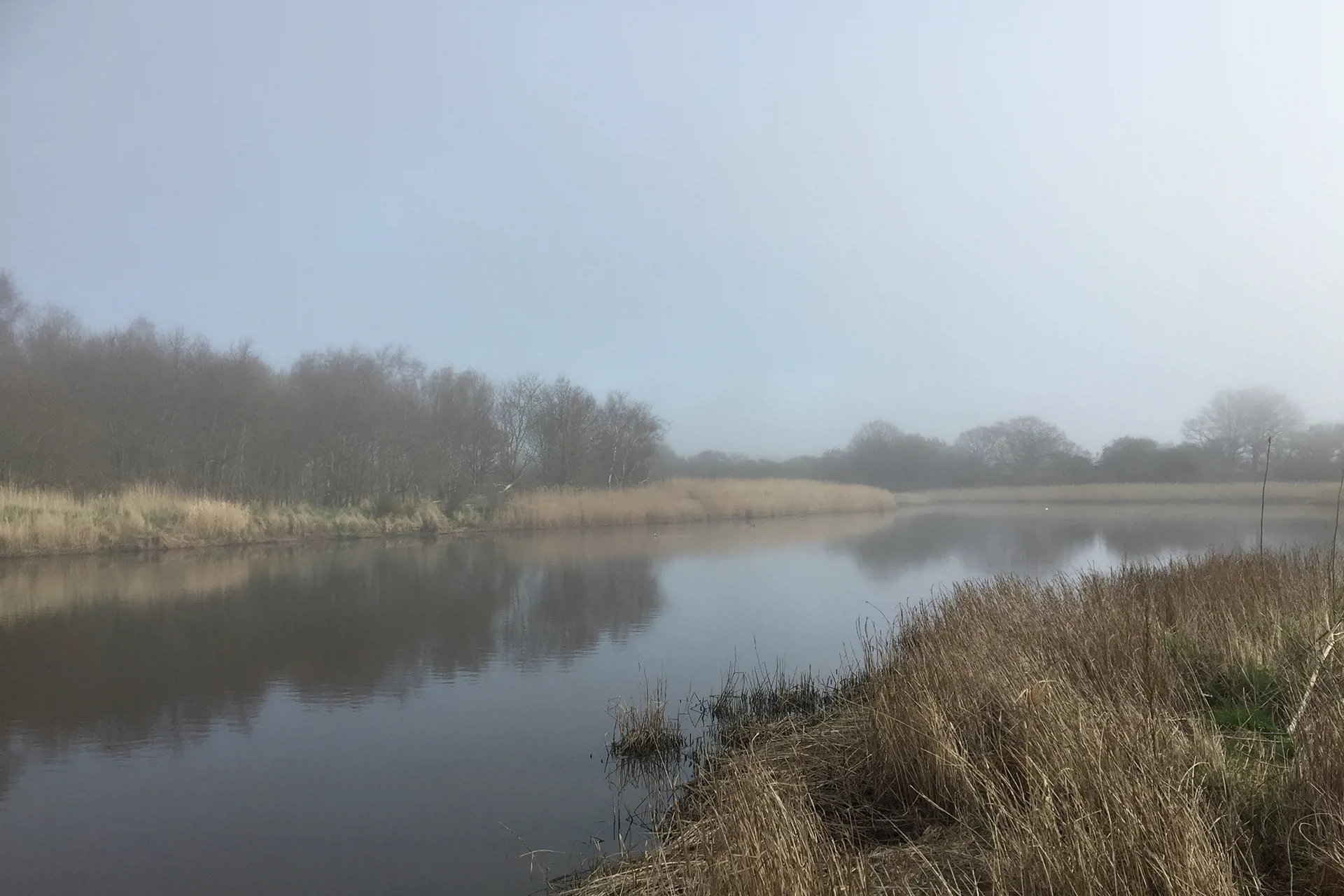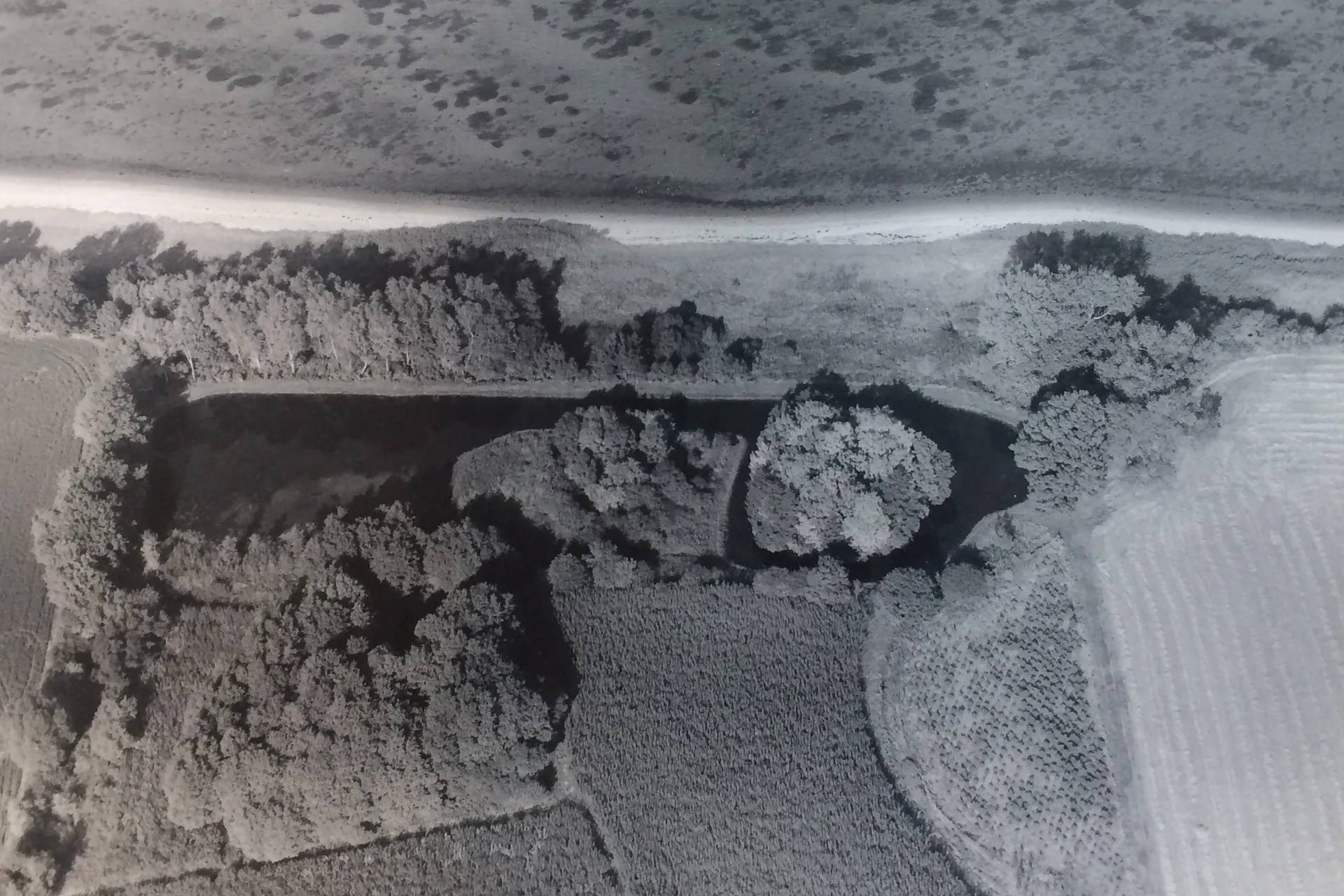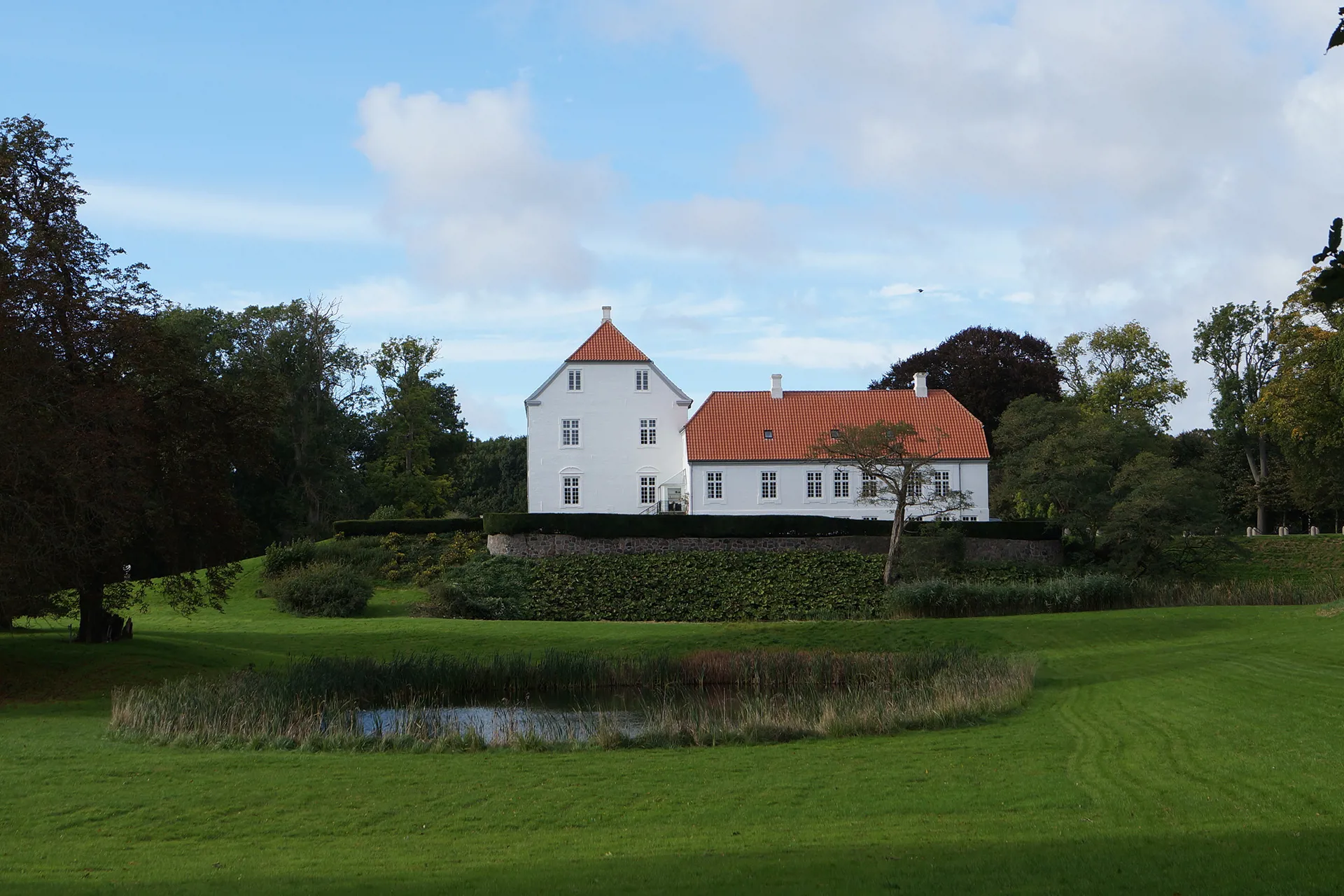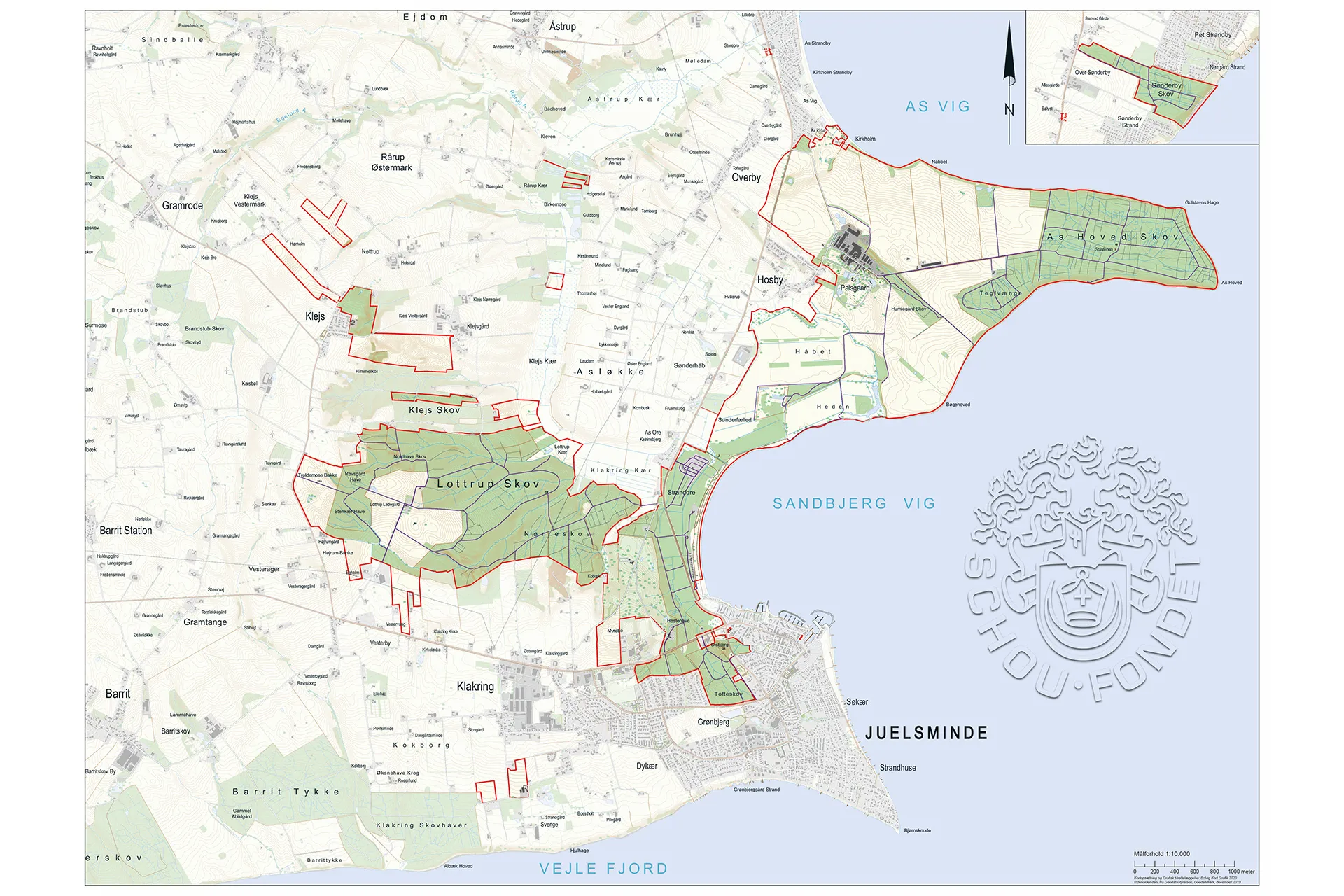Seabed became farmland
From parts of the castle park you have a view of the flat area "Haabet". "Haabet" was originally a secluded sea bay, which was under water until 1883. After the loss of Southern Jutland in 1864, projects were launched all over the country to increase food production under the proverb "What is lost outwardly must be gained inwardly".
At Palsgaard, a dike was built, and with pumping stations, the water was sent into the sea.
This is how 100 hectares of wet and swampy area were drained and turned into farmland. In the beginning, the area was used for grazing and hay, but when the pumps switched from wind power to electricity, it became possible to cultivate the area.
The map shows the area around Palsgaard. The red markings are areas that today belong to the estate.




